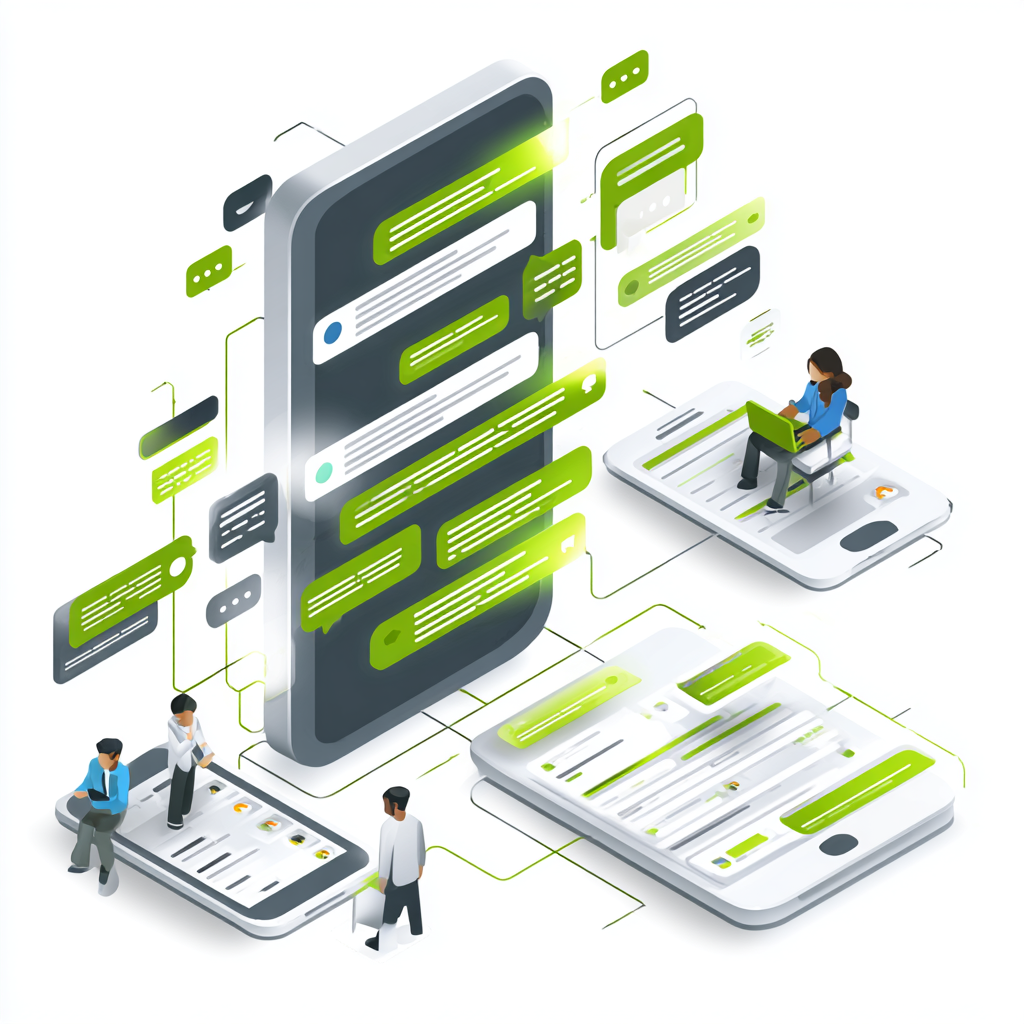Today, customer experience is a critical factor that can make or break a brand. Providing a positive experience for customers can lead to increased loyalty, positive word-of-mouth, and repeat business. But what exactly contributes to creating a seamless, enjoyable customer experience? This article will illuminate three (3) essential things that every business should focus on to elevate its customer experience.
3 Things important to customer experience
Here are three essential things that every business should focus on to elevate its customer experience:
1. Personalization
Personalization is a cornerstone of an exceptional customer experience. With the rise of data analytics and AI, businesses have more opportunities than ever to create tailored customer experiences. Personalization is about moving beyond a generic, one-size-fits-all approach and offering a more individualized experience that makes customers feel seen, valued, and understood.
i.) The power of personalized recommendations
One of the most common forms of personalization today is personalized product recommendations. E-commerce websites like Amazon and Netflix have mastered the art of suggesting products or content based on past behavior. For instance, when you log into Amazon, you are greeted with product recommendations that align with your previous searches, purchases, and browsing history. Personalization also extends to content. Think about when you visit a news website. The content is often tailored to your interests, such as articles on topics you’ve previously read about. This makes it easier for customers to discover relevant information without searching for it, enhancing their experience.
ii.) Tailored customer communications
Personalization can also be applied to your communication with customers. For example, you could send targeted emails to all customers based on their purchase history or browsing behavior rather than a generic email blast. If a customer recently bought a camera, you could send them a personalized email with recommendations for camera accessories or maintenance tips. Personalization is not just about addressing customers by their names in emails. It’s about understanding their needs, solving their problems, and offering value that feels specifically for them. Tailored communication shows that a business pays attention and cares about its customers’ needs.
iii.) The role of customer data in personalization
Customer data is the backbone of personalized experiences. Collecting and analyzing customer data enables businesses to understand customers’ preferences, behaviors, and pain points. You can build a comprehensive customer profile by utilizing data from various sources, such as web browsing, social media activity, and purchase history. However, it is essential to handle customer data responsibly. Transparency in collecting and using customer data is essential to maintaining trust. Personalization should always aim to enhance the customer experience, not to make customers feel uncomfortable or violated.
iv.) Personalization in customer support
Personalization is not limited to marketing and sales; it should also extend to customer support. When a customer reaches out to your support team, the representative must know their history with your brand. Imagine calling a customer service hotline and being greeted by an agent who knows your name, previous issues, and product preferences. This saves time and shows that the business cares about the customer’s experience beyond the immediate transaction.
2. Consistency across touchpoints
Consistency is essential when it comes to customer experience. Customers should feel like they are interacting with the same brand, regardless of the channel they are using. The overall customer experience should remain cohesive, seamless, and reliable, ensuring that the customer can trust your brand to deliver the same level of service every time.
i.) Omnichannel experience
Customers today interact with businesses across multiple touchpoints, often switching between online and offline channels. For example, a customer might first discover a product on Instagram, visit your website to learn more, and eventually purchase in-store. To provide a truly exceptional experience, your brand must ensure that the messaging, product information, and overall feel remain consistent across all these touchpoints. This omnichannel approach is vital for creating a smooth customer journey. If a customer starts browsing your website and finds certain features or offers, but when they call customer service, they receive conflicting information, it creates confusion and frustration. Ensuring that all your touchpoints are aligned and offer the same level of service is crucial for building customer trust.
ii.) Clear brand messaging and visual identity
A major aspect of consistency is your brand’s messaging and visual identity. This includes the tone of voice used in all your communications, your logo, color schemes, and the overall look and feel of your digital and physical presence. Whether a customer is browsing your social media page, reading a blog post on your website, or walking into your physical store, the experience should feel unmistakably “you.” For instance, a luxury brand will maintain a sophisticated, high-end feel across all its touchpoints. On the other hand, a tech startup may use a more playful and casual tone to connect with a younger audience. Consistency in these areas helps solidify your brand’s identity and makes it easier for customers to recognize and trust your business.
iii.) Consistent customer service
Your customer service team plays a significant role in maintaining consistency across touchpoints. Whether a customer interacts with a chatbot online or with a human representative in-store, the level of service should always meet your brand’s standards. Training customer service representatives to handle customer concerns efficiently and respectfully is critical. Additionally, equipping them with the necessary tools, such as customer profiles, to personalize each interaction will help maintain consistency and improve the overall experience.
3. Efficient problem resolution
No matter how well you manage your business, there will always be times when things go wrong. A product might be faulty, a service might fall short, or a delivery may be delayed. While these issues are inevitable, the key to excellent customer experience lies in how you handle them. Efficient problem resolution can transform a frustrated customer into a loyal one.
i.) Speed and transparency matter
One of the most critical factors when a customer encounters an issue is how quickly the problem is addressed. The faster you can resolve the issue, the less likely the customer is to feel frustrated or dissatisfied. A long waiting time or a lack of communication can cause negative feelings and result in the loss of a customer. Transparency also plays a crucial role in problem resolution. If a product is delayed in delivery, let the customer know. If there is a mistake in their order, acknowledge it promptly and explain how you will fix it. Customers value honesty and appreciate being kept in the loop.
ii.) Going the extra mile
Customers often expect more than a solution to their problems. They expect a gesture of goodwill. Offering a refund or replacement is one way to solve an issue, but going the extra mile can truly enhance the customer experience. For example, sending a personalized apology note, offering a discount on their next purchase, or providing a gift card can leave a lasting impression on the customer. Moreover, a business that takes responsibility for its mistakes and is genuinely interested in improving its experience is more likely to retain the customer. Showing empathy and understanding for the inconvenience caused can turn a negative situation into a positive one, reinforcing the relationship between the brand and the customer.
iii.) Empowering your team to solve problems
Your customer service representatives should be empowered to handle issues without unnecessary escalation. This means giving them the authority to issue refunds, discounts, or other resolutions based on the situation. Empowering your team speeds up problem resolution and shows customers that the brand trusts its employees to make decisions in the customer’s best interest.
The importance of seamless integration between channels
Customers often interact with multiple touchpoints before making a purchase decision. This could involve researching a product online, reading reviews on social media, and then purchasing it in-store or through a mobile app. Ensuring these touchpoints are seamlessly integrated is essential for providing a smooth and consistent customer experience. For example, if a customer looks at a product on your website and then decides to purchase it in-store, they should be able to check availability in real-time. Similarly, if a customer has a question on social media and a sales rep responds, that information should be readily accessible when they reach out to the customer service team later. The smoother the transitions between touchpoints, the more likely the customer will have a positive overall experience.
Building loyalty through exceptional customer experience
In an era where customers have more choices, providing an exceptional customer experience is a powerful differentiator. Personalization, consistency across touchpoints, and efficient problem resolution are three critical factors that create a memorable and positive customer experience. By focusing on these areas, businesses can build strong, lasting relationships with their customers, turning them into loyal advocates and driving long-term success.
A strong customer experience strategy is about more than fixing issues; it is about creating an environment where customers feel valued, understood, and appreciated at every step of their journey. Businesses that get it right will retain customers and see their reputation grow, their customer base expand, and their bottom line improve.





